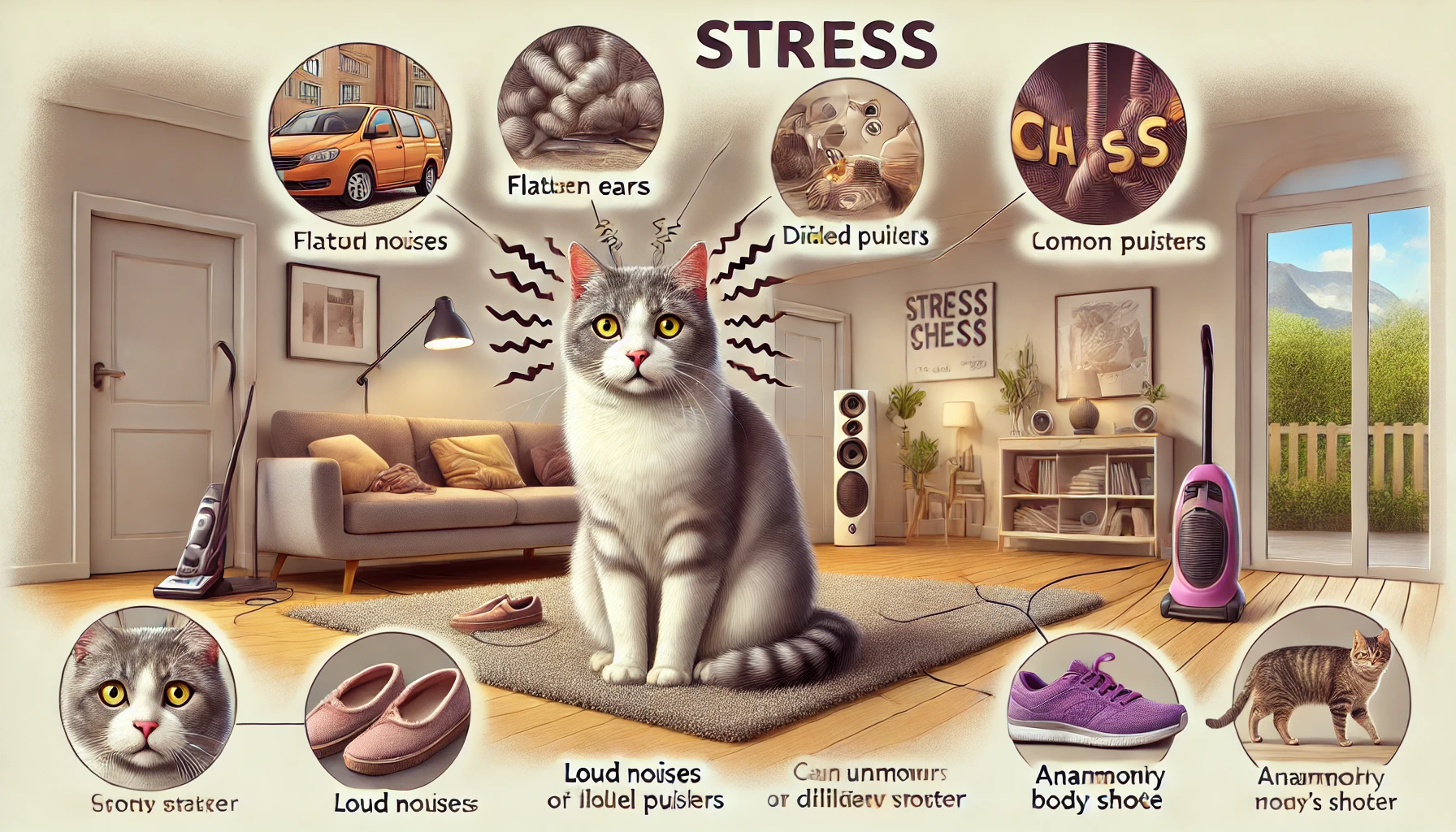Cats are creatures of habit, and even the slightest disruption to their routine can leave them feeling uneasy. Stress in cats can manifest in subtle ways, and as a responsible pet owner, recognizing these signs early is essential to ensure your feline friend’s well-being. From behavioral changes to physical symptoms, understanding what stress looks like in cats can help you provide the support they need. This article explores the signs of stress in cats, including peculiar habits like licking plastic bags, and how the best cat treats can play a role in reducing anxiety and reinforcing positive behavior.
What Causes Stress in Cats?
Stress in cats can stem from various factors, including environmental changes, health issues, and even boredom. Understanding the root cause is the first step toward helping your cat feel at ease.
Common Causes of Stress:
- Environmental Changes: Moving to a new home, rearranging furniture, or introducing new pets can disrupt a cat’s sense of security.
- Lack of Stimulation: Boredom or insufficient mental and physical activity can lead to stress.
- Health Issues: Pain, illness, or undiagnosed medical conditions may cause anxiety.
- Separation Anxiety: Some cats become stressed when left alone for long periods.
- Loud Noises: Fireworks, thunderstorms, or construction noises can trigger fear and stress.
Behavioral Signs of Stress in Cats
Behavioral changes are often the first indicators that a cat is stressed. Depending on the cat’s personality and the severity of the stressor, these changes may be subtle or more pronounced.
Common Behavioral Signs:
- Hiding: A stressed cat may retreat to hidden spaces, avoiding interaction.
- Aggression: Uncharacteristic aggression toward humans or other pets can indicate anxiety.
- Excessive Vocalization: Cats may meow more frequently or loudly when stressed.
- Over-Grooming: Stress can lead to compulsive grooming, sometimes resulting in bald spots.
- Avoidance of the Litter Box: Cats under stress may urinate or defecate outside the litter box.
Physical Symptoms of Stress
In addition to behavioral changes, stress can manifest in physical ways, impacting your cat’s overall health.
Physical Indicators of Stress:
- Loss of Appetite: A stressed cat may eat less or refuse food altogether.
- Digestive Issues: Vomiting or diarrhea can be stress-related symptoms.
- Excessive Shedding: Increased hair loss is a common physical response to stress.
- Rapid Breathing: Panting or rapid breathing can signal anxiety or fear.
- Tense Body Language: A crouched posture with ears flattened indicates discomfort.
If these symptoms persist, consulting a veterinarian is crucial to rule out underlying health problems.
Why Does My Cat Lick Plastic Bags?
One of the more peculiar behaviors linked to stress or boredom Why Does My Cat Lick Plastic Bags?
Reasons for This Behavior:
- Texture and Sensory Appeal: Cats may find the smooth, wrinkled texture of plastic bags intriguing to their senses.
- Attraction to Scents: Plastic bags often carry residual smells of food or chemicals that interest cats.
- Stress Relief: Licking can be a self-soothing behavior, similar to humans biting their nails.
- Pica Syndrome: A condition where cats eat or lick non-food items, often linked to stress or dietary deficiencies.
How to Address It:
- Keep plastic bags out of your cat’s reach to avoid ingestion or harm.
- Offer toys or the best cat treats to distract and redirect their focus to healthier activities.
Using the Best Cat Treats to Relieve Stress
The best cat treats are more than just tasty snacks; they can be valuable tools for alleviating stress and reinforcing positive behavior.
How Cat Treats Help:
- Positive Reinforcement: Rewarding good behavior, such as using a scratching post or staying calm, can reduce stress-related actions.
- Calming Ingredients: Many treats are formulated with calming ingredients like chamomile or L-theanine to help soothe anxious cats.
- Engagement and Stimulation: Treat-dispensing toys keep cats mentally stimulated, reducing boredom-induced stress.
- Bonding Opportunity: Offering treats during playtime or grooming sessions strengthens your bond with your cat.
Tips for Choosing the Best Cat Treats:
- Natural Ingredients: Look for treats made with real meat or fish.
- Nutritional Value: Select treats fortified with essential vitamins and minerals.
- Low-Calorie Options: Prevent overfeeding to avoid weight gain.
Pro Tip: Explore the variety of premium cat treats at KwikPets to find options that cater to your cat’s specific needs.
FAQs About Stress in Cats
1. How can I tell if my cat’s licking behavior is stress-related?
If your cat licks objects like plastic bags or themselves excessively, it may be a sign of stress. Monitor their environment for potential triggers and provide distractions such as toys or treats.
2. Can the best cat treats help with stress management?
Yes, treats with calming ingredients or interactive toys that dispense treats can help reduce stress and provide mental stimulation.
3. What are other signs of stress in cats besides licking plastic bags?
Hiding, aggression, over-grooming, and loss of appetite are common signs of stress. If these behaviors persist, consult a veterinarian.
4. How can I create a stress-free environment for my cat?
Provide a safe, quiet space with plenty of toys and scratching posts. Use pheromone diffusers and establish a consistent routine for feeding and playtime.
5. When should I seek professional help for my stressed cat?
If your cat exhibits chronic stress symptoms or significant changes in behavior, consult your veterinarian to rule out medical issues or explore treatment options.
Understanding the signs of stress in cats and addressing their needs is vital to ensuring their happiness and health. Whether it’s solving the mystery of “Why does my cat lick plastic bags?” or using the best cat treats to promote relaxation, small changes can make a big difference in your cat’s life. Visit KwikPets today for high-quality products that support your feline’s well-being.




